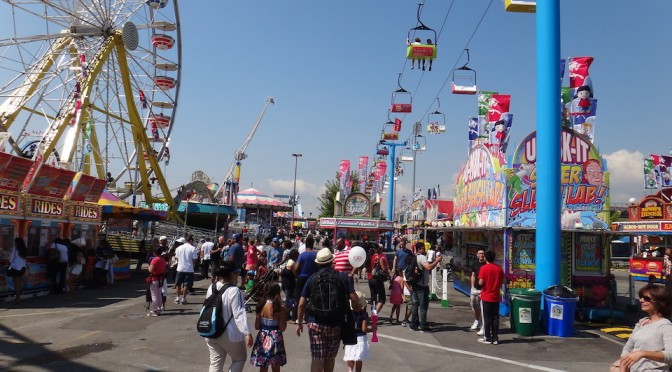The Lab and the Club are looking forward to putting on our hard hats, safety shoes and high-visibility vests and heading to the construction zone at Exhibition Place for the THRILL Lab’s annual experiential learning highlight behind the scenes at the Canadian National Exhibition. During the construction of the fair, students meet operators of the show, North American Midway Entertainment, the CNE, many widely respected consultants, and certified amusement device inspectors from the Technical Standards and Safety Authority (TSSA), a not-for-profit organization that regulates technology relevant to public safety, including amusement devices, throughout Ontario, and the Electrical Safety Authority, their electrical inspection and regulation counterparts.
Students learn how current amusement ride technology works, why it is entertaining, and how regulators, owner-operators, and consultants make this industry safe and enjoyable. During the 18-day show, Canada’s largest fair and one of the top 10 fairs in North America attended by over 1.3 million guests, students observe how children and adults interact with amusement devices to gain an understanding of the importance of designing for real people.
The THRILL lab, led by Dr. Kathryn Woodcock, a professional engineer (P.Eng.) and Canadian certified professional ergonomist (CCPE), is studying future developments for amusement devices for enhanced “show” and guest experience, easier to use control interfaces, and quicker expertise development for new inspectors. Many Thrill Club members and THRILL lab trainees are interested in careers in the amusement industry, an important part of the tourism sector with few formal academic programs available focused on this industry.

